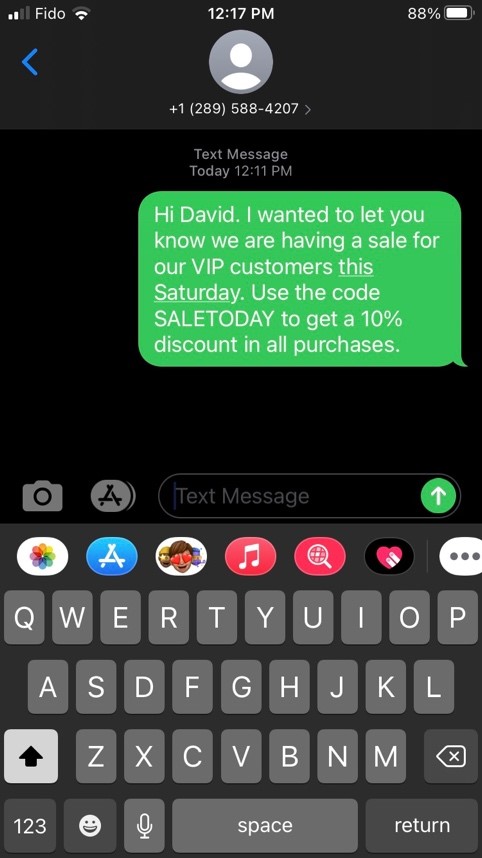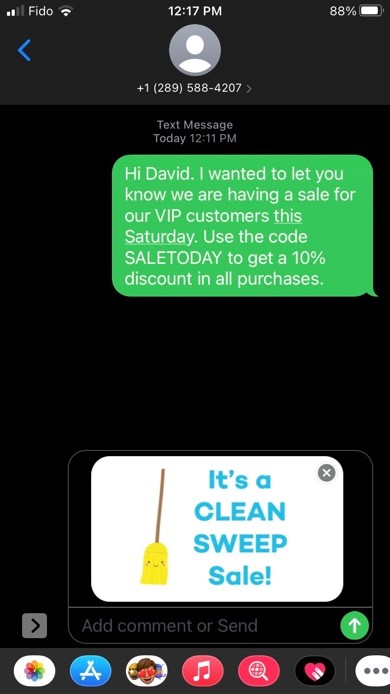You probably send and receive text messages every day, in both your personal and work life. However, you might not be able to explain what SMS means, or know all the differences between SMS and MMS. These two terms are often confused with each other, but they are two different ways to send text messages. When you break it down to the basics, SMS refers to text messages, while MMS refers to messages that include a picture or video.
What is SMS?
SMS stands for Short Message Service. It is a text message that contains text alone, without pictures or video. An SMS message is also limited to 160 characters. SMS is one of the oldest texting technologies, first developed in the 1980s. It is also one of the most widely used despite continued innovations in communication technology.
What is MMS?
MMS stands for Multimedia Messaging Service. It is an extension of the SMS protocol which allows for the sending and receiving of both text and media, such as pictures, GIFs, videos, audio clips, etc.
MMS messages also allow an "unlimited" amount of text characters (although different providers will place limits on the amount of text that can be sent via MMS), which is significantly more than what is allowed in SMS.
SMS vs. MMS pros and cons
SMS and MMS both enable you to send messages to your customers, but each type of text messaging protocol has its pros and cons. Depending on the situation, it might more suitable or effective to send messages by SMS instead of MMS, and vice versa.
Advantages of SMS
- SMS messages are typically short and concise. Since these types of messages have a 160-character limit, they are easier for the end user to understand.
- It costs less to send SMS messages than it does to send MMS messages.
- Most U.S. mobile phone service providers offer unlimited texting plans, so your subscribers will not have to pay to send or reply to SMS text messages.
Disadvantages of SMS
- SMS has a 160-character limit, which can hinder your marketing and messaging options if you want to send longer messages. If you do send a longer message, the SMS will break it into several shorter texts, which can annoy the receiver.
- SMS messages do not allow you to send videos or photos, or in some cases emojis. This can limit the creativity of your messages, and your text messages could get lost in the crowd of other messages received by your audience.
Advantages of MMS
- MMS has an "unlimited" character limit (depending on the texting service provider), which enables you to send large amounts of content in each message. You can provide subscribers with more detailed information, as well as links to information on your website.
- MMS enables you to include pictures and videos in your messages, which makes it easier to grab the receiver’s attention. You can also get more creative with your messaging, such as including audio files and GIFs.
Disadvantages of MMS
- MMS messages cost more to send than SMS messages. Your marketing budget might not allow you to send as many MMS messages to customers as you would like.
- Some people don’t have smartphones, or their mobile devices are incapable of receiving MMS messages. Some people also don’t have MMS messaging enabled in their cellphone plans, so they won’t be able to receive your messages.
- You might need to hire someone to create the photos or videos for your MMS messaging, which is an additional cost when putting together a texting campaign.
SMS vs. MMS FAQs
How popular is SMS?
According to research, 23 billion text messages are sent every day. U.S. smartphone users in the 18-24 age category send approximately 2000 texts per month., while 98% of all smartphone users send text messages regularly. Approximately 80% of professionals use SMS in their business.
SMS messages have a 98% open rate, compared to only 20% for emails. The average person takes 90 seconds to respond to an SMS message, compared to 90 minutes for emails. SMS marketing campaigns also perform seven times better than email marketing campaigns.
What happens if an SMS exceeds the 160-character limit?
If your SMS message is longer than 160 characters, it will be broken into several messages, depending on the length of the text message. Most carriers will chain the messages so that they arrive in the proper order.
How are SMS and MMS different from iMessage or WhatsApp?
WhatsApp, iMessage, WeChat, Facebook Messenger, and similar messaging applications are also referred to as Over The Top (OTT) applications. These applications do not use a cellular network to send messages; messages are sent via the Internet. To view these messages, recipients must download the app to their smartphone or mobile device. Some smartphones have preloaded applications. For example, iPhones have iMessage already installed. Each application has its own protocols for sending and receiving messages, uses different platforms, and has different network requirements.
When you send a message using iMessage to an iPhone, it will default to an iMessage. If an iPhone user does not have iMessage, it will default to SMS. The color of the text message will differ depending on whether it uses iMessage or SMS.
OTT applications are free to use, which makes them more cost effective than SMS and MMS. They are sometimes preferable to MMS for sharing multimedia files as they do not have the same file size limits. They also offer more features, such as group messaging, message broadcasting, and audio and video calling.
However, OTT applications can only communicate with each other (i.e., you cannot send a WhatsApp message to someone using WeChat). Conversely, you can send SMS and MMS messages to anyone with a mobile device.
What is better to use for mobile marketing?
SMS is ideal when you want to communicate short messages that contain essential information. For example, if you are running a text-to-join campaign, and you expect a lot of people to sign up, it is more cost effective to send SMS messages. It is also effective for sending transactional SMS messages, such as:
- Order confirmations
- Delivery tracking messages
- Appointment reminders and updates
- Password resets and two-factor authentication (2FA)
If cost is a factor, then it makes sense to send SMS messages, as MMS messages will always cost more. Sending MMS messages requires your carrier to send more data than a standard SMS message. If your data plan limits the number of text messages you can send per month, you will be able to send more SMS messages than MMS messages. For example, if you have a 1000-message limit, you could send 1000 SMS messages, but you might only be able to send 300 to 500 MMS messages.
However, MMS marketing campaigns have higher engagement levels than traditional SMS messages. On average, an MMS campaign has 15–20% more engagement than an SMS campaign. MMS messages are 10 times as likely to be shared on social media channels than SMS messages. Marketing messages with visuals are also 43% more persuasive than messages with text alone. Given how MMS messages are more effective for marketing purposes, you might want to use this option for certain types of digital marketing, such as:
- Demonstrating current or new products
- Offering a coupon
- Running a competition
- Inviting subscribers to an event


